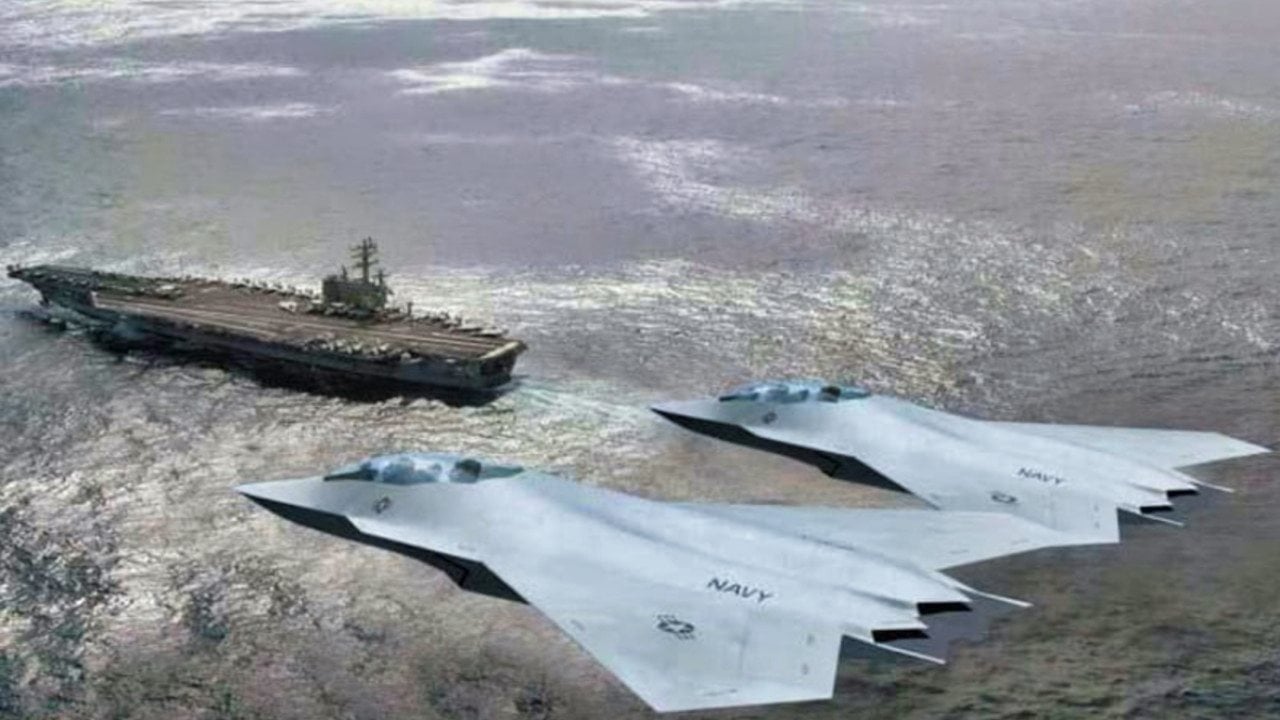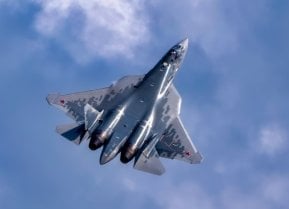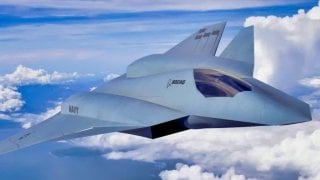F/A-XX: The 6th Generation Stealth Fighter That Will Replace the F/A-18
The F/A-XX program is the development and acquisition program for a sixth-generation air superiority fighter. The F/A-XX program is the Navy’s manned fighter component of the Next Generation Air Dominance (NGAD) family of systems, which will be distinct from the Air Force’s NGAD fighter, known as the Penetrating Counter-Air (PCA).
The US military has the highest quality and quantity of airframes of any military on Earth. The F-22 Raptor, for example, was the world’s first fifth-generation fighter – and remains one of the world’s few fifth-generation fighters. The F-35 Lightning II is a fifth-generation workhorse renowned for its interconnectivity and situational awareness-enhancing features. The B-2 Spirit was the world’s first stealth bomber. The F-15 Eagle remains an undefeated dogfighter.

And the fourth generation-plus F/A-18 Super Hornet can do a little bit of everything. Air superiority. Ground attack. Suppression of enemy air defense. Land-based operations. Carrier-based operations. Day missions. Night missions.
Still, despite the wealth of technologically advanced aircraft in the US military’s inventory, war planners are thinking ahead – to the next conflict, to the next enemy – and urgently preparing platforms equipped to thwart future threats. Accordingly, much of the contemporary US inventory is on the chopping block, slated to be replaced with designs that have not yet been fully designed. The F/A-18 is one such airframe. Despite being a venerable platform, the F/A-18’s eventual replacement is already under development. The replacement: the F/A-XX program.
F/A-XX - The Future of Naval Aviation
The F/A-XX program is the development and acquisition program for a sixth-generation air superiority fighter. The F/A-XX program is the Navy’s manned fighter component of the Next Generation Air Dominance (NGAD) family of systems, which will be distinct from the Air Force’s NGAD fighter, known as the Penetrating Counter-Air (PCA).
Shrouded in secrecy, not very much is known about the F/A-XX yet. Although, the F/A-XX did recently move into the design maturation phase.
“The U.S. Navy’s secretive next-generation fighter program has completed concept refinement and has moved into a design maturation phase,” Aviation Week reported in August, “while the service has officially announced the companies vying for the contracts.”
The companies vying for the contract include the usual suspects: Boeing, Lockheed Martin, and Northrop Grumman. Meanwhile, GE Aerospace and Pratt & Whitney are competing for the F/A-XX engine contract.
Cmdr. Mark Cochran explained during a Tailhook Symposium panel discussion that the “Navy is prioritizing operational reach on top of operational capacity for the program,” Aviation Week reported. “This means a family of systems, coupled with Collaborative Combat Aircraft, to counter advanced threats at long distances.”
The Collaborative Combat Aircraft (CCA) is expected to be an unmanned drone component of the NGAD system, which flies as a “loyal wingman” alongside the manned fighters. The inclusion of the CCA with the F/A-XX suggests that the new fighter will feature advanced interconnectivity with other platforms.
“The F/A-XX needs to use advanced weapons and data links, with planners focusing on what apertures will be on the aircraft for sensing and communications,” Aviation Week reported.
Indeed, the F/A-XX is expected to feature “maximum connectivity,” a technology that is not precisely defined but likely refers to advanced communications and sensor technology, i.e., the ability to connect with satellites and other aircraft to provide real-time battlefield updates.
To accommodate the sensors required for maximum connectivity, the F/A-XX will likely feature an “open architecture” design. Open architecture allows for various sensors, payloads, and weapons to be interchanged – moved in or out – depending on the needs of the mission. The result is cost-effective versatility, an airframe that can do whatever is needed on any particular day.
“What is known is that the primary missions for the F/A-XX next-generation fighter could include air combat, air-to-air, ground attack, surface warfare, and close air support,” defense expert Peter Suciu reported. “Platform requirements include supercruise capabilities as well as advanced next-generation stealth features, sensors, and radars with networking adaptability. Additional missions and capabilities include air-to-air refueling, reconnaissance, surveillance, and target acquisition (RSTA), and electronic warfare and countermeasures.”
Additionally, “we can expect artificial intelligence (AI) and machine learning (ML) to be incorporated into the NGAD, acting as a co-pilot for the manned aircraft and allowing the unmanned aerial systems (UAS) to act independently,” Suciu reported. “In other words, the drones won’t require constant directions from the manned aircraft – they’ll follow orders, of course, but still show initiative.
Looking Ahead: Will the F/A-XX Program Become a Real Game Changer?
We are still several years out from the F/A-XX’s debut. The F/A-XX program will be developed while the Air Force’s NGAD program is simultaneously being developed. Whichever comes first will be America’s first sixth-generation fighter.
Either program could potentially become the world’s first sixth-generation fighter. But competition looms from rivals and allies alike. The British, alongside Italy and Japan, are working on the Global Combat Air Programme (GCAP). The French, German, and Spanish are working on the Future Combat Air System (FCAS). Both the GCAP and FCAS aspire to produce the world’s first sixth-generation fighter. And meanwhile, sixth-generation programs are understood to be underway in Russia, China, and Turkey.
Naturally, the US will strive to be the first to produce a sixth-generation fighter. And if precedent (or contemporary military budgets) is any indication, the US is the clear favorite to be first.
About the Author
Harrison Kass is a defense and national security writer with over 1,000 total pieces on issues involving global affairs. An attorney, pilot, guitarist, and minor pro hockey player, Harrison joined the US Air Force as a Pilot Trainee but was medically discharged. Harrison holds a BA from Lake Forest College, a JD from the University of Oregon, and an MA from New York University. Harrison listens to Dokken.
Image Credit: Creative Commons.


